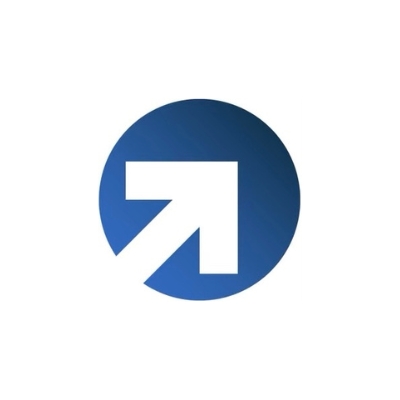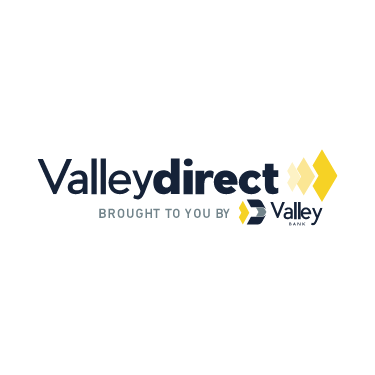If you have some money saved up – whether it’s your emergency fund or a future house down payment – you’d probably like to keep it somewhere safe, and earn interest, but are there alternatives to savings accounts?
Traditional savings accounts might not always be the best place to do so. Savings accounts at traditional banks are great options to grow your savings short-term to mid-term.
Regular savings accounts, though, tend to earn low-interest rates. The average annual percentage yield on these accounts is only 0.42%. There are many ways savers can choose to substitute their traditional savings account with a higher interest-earning alternative.
6 Best Alternatives to Savings Accounts
Here are the best alternatives to savings accounts you can find on the market today.
- Money Market Accounts
- Certificates of Deposit
- Interest-Bearing Checking Accounts
- Online Bank Savings Accounts
- Peer-to-Peer Lending Services
- Cash Management Accounts
1. Money Market Accounts
Money Market Accounts (MMAs) are a type of savings account you can easily open at any bank.
Just like regular savings and checking accounts, they are FDIC-insured, so you won’t risk losing your deposits in case something happens to the financial institution.
Money market accounts tend to offer higher interest rates than plain savings accounts (even at the same financial institution).
For example, if a bank or credit union offers a 0.10% APY on a regular passbook savings account, they might offer a 0.25% APY on an MMA.
Why doesn’t everyone choose MMAs over traditional savings accounts then?
As with many things in life, there are tradeoffs.
While it’s true that MMAs offer more interest, they also have additional requirements you’ll need to meet to open an account.
MMA Requirements
Money market accounts usually have a minimum opening balance requirement to get started with the account – and you’ll often have to maintain that amount, too.
Otherwise, you could incur a penalty fee or lose some of the higher interests promised.
Depending on the financial institution’s policy, if your balance drops below the required minimum, they could either make you pay a fee or drop the APY.
I’d suggest you take a closer look at your bank account rules before you open one, so you’ll know how to avoid fees and unpleasant costly surprises.
MMAs also include some benefits typical of checking accounts in their offer. For example, you’ll gain check-writing privileges, even if limited.
Usually, a bank will let you write between 5 and 10 checks on your MMA account every month.
Pros:
- Medium-high interest rates
- Check-writing privileges
- Easy to access
- Cash liquidity
Cons:
- Potential fees
- Minimum balance
- Limitations
2. Certificates of Deposit
Certificates of Deposit (CDs) accounts are a special kind of savings account. They work a little differently than most bank accounts you might know.
The first thing about CDs is that you won’t access your funds for a while.
They are savings accounts that earn a fixed interest rate on the money in the account, which you’ll have to leave in the said account until a pre-established fixed date.
The longer you plan on leaving your money in the account, the higher the interest offered will be.
In essence, you’ll trade in fund liquidity for a higher interest rate. This solution doesn’t make sense for everyone, but it’s a great option to have.
CD rates are usually higher than those offered by regular savings, provided you agree on leaving the funds in your CD for at least a year or two.
The period for your CD to mature (in other words, the period of time until you’ll be able to take your money out) is called a CD term. That’s usually from 1 to 5 years or more.
You can’t access your funds before the term has ended. When the date of maturity comes, you will be able to decide whether to take your money out of the account (interest included) or reinvest it in a CD or another form of account.
Early Withdrawal
Can you take out the money in your CD even though it hasn’t reached maturity if you have a financial emergency?
Yes, usually it’s possible to do so, but you will have to pay the penalty or a fee and defeat the whole purpose of opening a CD in the first place. Only do it if you really have no other option.
Early withdrawal penalties vary between different financial institutions, so get as much information as you can before opening an account.
These penalties can be a hidden benefit if you would like to have a deterrent on the temptation of withdrawing your money early.
If you are worried about accessing your funds, there is a better way you can plan on getting to your funds early with CDs. You’ll have to open multiple accounts that mature on different dates to solve your problem and have a little more liquidity.
The national average rate for CD accounts currently starts at 0.21%. If you choose a term of only one year, it goes up to 0.95% for a two-year CD term, and it can go even higher, depending on your time commitment to the account.
Even for a short-term CD, you have probably noticed that the rate is significantly higher than the low 0.06% APY you’d get with a traditional savings account.
My advice is to check interest rates at multiple banks and credit unions since rates fluctuate and can vary dramatically.
CDs, just like checking, savings, and money market accounts, are FDIC insured.
Pros:
- FDIC insured
- High-interest
- No temptation for early-withdrawals
- Great for long-term savings goals
Cons:
- Early withdrawal penalties or fees
- No easy access to your funds
3. High-Yield Checking Accounts
Not only savings accounts can earn interest. Some selected premium checking accounts have that option, too and usually are high-yield accounts.
Interest-bearing checking accounts consistently earn higher APYs than savings accounts, and by a lot. They can offer up to a 2% annual percentage yield.
High-Interest Rate Requirements:
- keeping a minimum balance in the checking account
- setting up direct deposit or bill pay
- reaching a minimum number of debit card transactions each month
Not everyone will meet these requirements since the minimum balance is always pretty high, and not every account holder is an avid user of its credit card or debit card.
If you meet the main requirements but not all, usually you won’t be fined, but the interest rates earned on your account will drop to match the lower APY offered on regular accounts, or often you won’t earn interest at all.
Always talk to a bank representative about eligibility requirements and possible fees.
If you’re looking for an account for day-to-day spending, then a checking account is a good idea.
They offer access to the ATM, debit cards, credit cards, check writing, bill pay, and a lot more than just storing your money to grow savings.
If you need an account that encourages you to keep your funds in the account for longer, I’d suggest checking out the CD accounts mentioned above, which are great for long-term savings.
Pros:
- Check writing
- Bill pay
- Credit cards and debit cards
- High APY
Cons:
- High minimum balance requirement
- Mandatory minimum debit card expenses
4. An Online Bank or Credit Union
Opening an online savings account at an online bank or credit union will almost always mean you’ll be able to earn higher interest rates than with the brick-and-mortar local bank counterpart.
You could jump from earning a 0.08% APY at a traditional bank to a way higher 1.50% APY only by switching to an online financial institution.
Convenience of Online Banks:
- You can check on your account 24/7, wherever you are.
- You can avoid any fees.
- You won’t have to visit the local bank if you have a question.
Online financial institutions usually have well-designed web portals and mobile apps and 24/7 customer service ready to assist you, on top of higher interest rates.
Even banks with monthly service fees in place will sometimes waive them if you open an online-only account.
They do that because you won’t use their facilities, lowering the bank’s overhead expenses of maintaining a physical space. It’s a win-win situation!
Drawbacks of Online Banks
- you won’t be able to talk to a bank representative in person
- if you aren’t comfortable using technology, it may get complicated for you
That said, learning how to use an app is easy, and you will have access to chatbots or customer service by phone.
Online accounts’ higher-yield APY can even be 10 or 20 times more than the usual brick and mortar APY, so don’t underestimate the power of staying online with your personal finances!
With online accounts, you will have all of the same services and insurance you would have available at a local branch. Banks are federally insured by FDIC and credit unions – by NCUA.
Both online banks and credit unions usually offer great deals on CDs, too. It might be worth having a look and shop around a bit to find the absolute best APY.
Are you ready to move to online savings and earn more interest? Some of the best financial institutions you should consider are Ally Bank and American Express Bank, among many other valid options. They both offer higher savings accounts online.
Pros:
- Higher APY
- FDIC or NCUA insured
- Highly convenient
- 24/7 customer service
- Well-designed web portal and mobile app
- High-interest rates on CDs
- No fees
Cons:
- Should be comfortable using technology
- Can’t go to a local branch for advice from bank representatives
5. Peer-to-Peer Lending
Peer-to-peer lending (P2P Lending) is an innovative way for lenders and borrowers to meet and do business online without a bank intermediary.
The service has become increasingly popular in recent years. It’s a win-win for both the borrowers, who can obtain a personal loan without going to a bank, and the lenders, who will gain higher returns on investment by funding the loans.
Peer-to-peer lending services are handled entirely online through websites such as Kiva, and Prosper.com.
The loan capital stored in lending accounts is not FDIC insured, unlike regular savings or checking accounts, since P2P lending operates outside the banking world.
Is P2P Lending Risky?
This factor might make it seem risky to invest with peer-to-peer lending, but that isn’t the case.
First of all, all borrowers are screened and must meet specific requirements before gaining access to the online platform. Without the screening, they can’t obtain a loan from the lenders.
Furthermore, peer-to-peer lending services operate in a way that reduces risks dramatically. Individual lenders aren’t usually funding only one loan required by a single borrower – they put a small fund towards multiple loans simultaneously.
Lending risk is reduced by spreading it out among many borrowers. So, if something ends up not working out with one borrower, the loss will still be minimal.
If a borrower asked for a loan of $200, for example, that whole amount wouldn’t be funded by one individual lender only.
A few different lenders would contribute something like $50 towards that total amount.
The result is that the borrower gets the money, and the lenders don’t risk losing the investment. It sounds like a very well-thought-out system to me!
Another benefit of peer-to-peer services is that they usually have low minimum deposit requirements and low fees.
How is the interest rate charged on loans calculated with P2P?
Both the borrower and the reason for the loan will go through an evaluation process. After the evaluation, each borrower gets assigned a credit risk.
Subsequently, lenders will set up a level of risk they are comfortable with, and the system matches them with the right “group” of borrowers.
As you can see, it’s pretty straightforward. It’s all automated, relatively low-risk, and convenient too!
According to 2015 data, lenders earned a return of 5% to 9% on their investments. The earning potential is far more than with a regular savings account.
Pros:
- Win-win for lenders and borrowers alike
- High investment returns
- Safe investments
Cons:
- Low cash liquidity
- No FDIC insurance
6. Cash Management Accounts
Cash management accounts (also referred to as CMAs) aren’t part of a traditional bank’s offering.
They are usually provided by non-bank financial services, such as brokerage firms or fintech companies.
CMAs are similar to bank accounts and combine the features of savings accounts and checking accounts.
These hybrid CMAs are a great choice if you want to grow your savings quickly. That’s because, typically, you can get significantly higher APY than your regular savings accounts.
Cash management accounts can usually be found at online-only providers.
If you’d prefer one-on-one personal interaction when you have a question about your account or you are not fond of apps and computers, then they might not be the best choice for you.
On the other hand, online services more often than not have stellar customer service offered online or by phone.
These companies also charge lower fees to keep your account open, as they avoid the overhead costs that come with physical facilities.
Open your new CMA account at the same brokerage firm where you already have some other account. You’ll conveniently have all of your accounts under the same roof.
Ask your preferred CMA provider about ATM access and how you can regularly fund your account.
Some financial institutions make it easier than others, so it’s something I’d suggest looking into before opening an account.
Pros:
- High APY
- User-friendly online services
- A mix between a savings account and a checking account
- Customer service
Cons:
- Limited funding options for the account (not all CMAs provide debit cards/ ATM access)
- No in-person interaction
What About Investing?
You could also replace your savings account with something more profitable – like conventional investments.
They’ll often come with a higher risk element, so be mindful of that – especially if you want to have easy and quick access to your money.
Some options worth mentioning are corporate bonds, municipal bonds, savings bonds, mutual funds, ETFs, the stock market, or U.S. Treasury bills.
For more information on each, check out some of our other articles – or speak to a financial advisor.







Comments are closed.
Comments are closed here.